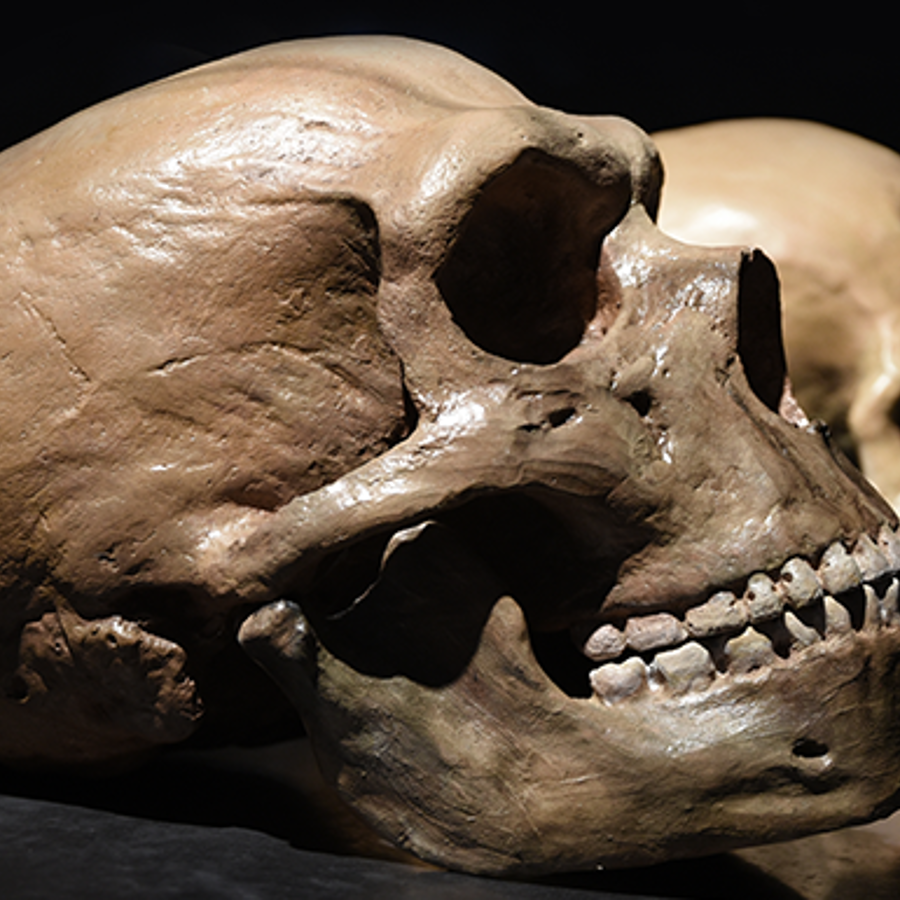
Did Rh- blood come from Neanderthals?
July 9, 2013

- Related Topics:
- Blood type,
- Rh factor,
- Neanderthals,
- Human evolution
A curious adult from California asks:
"Did Rh- blood come from Neanderthals? I have seen postings on the web that say that it entered human DNA around 35,000 years ago and that seems about right for coming from Neanderthals."
No, Rh negative blood does not come from Neanderthals.
If the 35,000 number were right, then this wouldn’t be a bad guess. But that number is almost certainly incorrect. Rh- blood probably arose millions of years ago rather than tens of thousands.
Keep in mind that when I say Rh- here, I mean the form that is common in Europe. This is just one of lots of ways of being Rh-. This means there wasn’t some single event of outbreeding that explains all forms of Rh- blood. Lots of individual specific events have happened over our history.
And even if we do focus just on the form common in Europe, the 35,000 number still doesn’t work. This form predates modern humans settling down in Europe.
One of the big clues that this form of Rh- has been around for a long time is that the same type of Rh- that Europeans have is also seen in Africa. And since Neanderthals only interbred with humans who had migrated out of Africa, this is one clue that Rh- was around before that.
And don’t just take my word for this. Because there isn’t a lot of information out there about the evolutionary history of Rh- blood, I decided to consult one of the big names in the field, Dr. Bill Flegel of the National Institutes of Health. Here is what he had to say in an email when I asked about the 35,000 number:
"35,000 years is very likely incorrect and too recent. The RHD deletion occurred in Africa, almost certainly before anyone migrated out of Africa. Keep in mind that the common RHD deletion worldwide is also *the* prevalent D negative RH haplotype in Africans today. How should that be, if the RHD deletion somehow occurred in connection with groups migrating out of Africa?"
What this all means is that it is extremely unlikely that the common form of Rh- blood originated in Neanderthals and then spread into humans through breeding. It simply arose too long ago for this to be true.
This also means that even if we see evidence that Neanderthals had this form of being Rh-, that doesn’t mean we got it from them. A more likely explanation in that case is that we shared common ancestors who had the same form of Rh- blood in their blood.
I should mention that so far we don’t have any evidence either way about the Rh status of Neanderthals (although we do know that some of them had O blood type). The part of the DNA that is involved in Rh status is tricky to read and we haven’t yet been able to figure it out in Neanderthals. But again, even if we do see evidence of this form of Rh- blood in Neanderthals, this doesn’t mean we got it from them.
So Rh- blood almost certainly did not come from Neanderthals. It also did not come from aliens or anything else like that. Rh- blood is just another genetic variation like the ones that lead to red hair or blue eyes.

Author: Dr. Barry Starr
Barry served as The Tech Geneticist from 2002-2018. He founded Ask-a-Geneticist, answered thousands of questions submitted by people from all around the world, and oversaw and edited all articles published during his tenure. AAG is part of the Stanford at The Tech program, which brings Stanford scientists to The Tech to answer questions for this site, as well as to run science activities with visitors at The Tech Interactive in downtown San Jose.
 Skip Navigation
Skip Navigation
